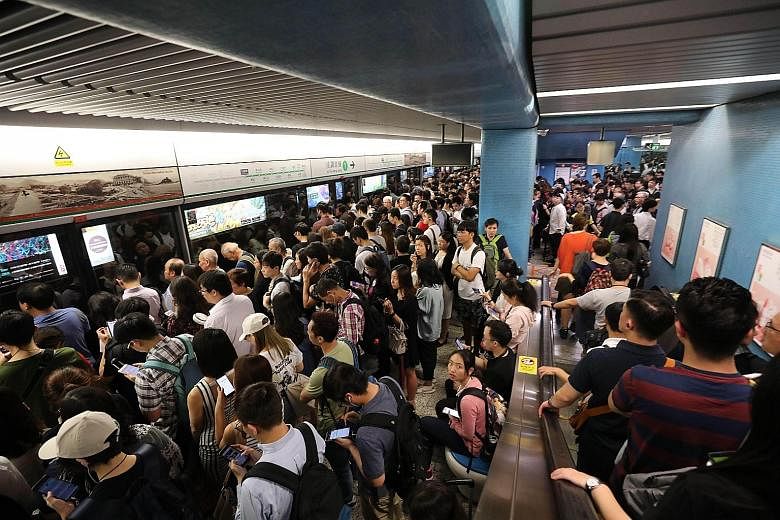The likelihood of the signalling systems of Singapore's rail network breaking down, the way the Hong Kong MTR's did last month, is low, said Transport Minister Khaw Boon Wan yesterday.
However, the Hong Kong incident is a timely reminder to "never let our guard down", and shows the importance of standardisation across the rail network, he added.
In a written reply to Mr Gan Thiam Poh (Ang Mo Kio GRC), Mr Khaw noted that initial findings on the Hong Kong incident indicate it was caused by a loss of synchronisation between signalling systems used by the four lines on the MTR, which serves more than four million passengers daily.
The systems are from two separate suppliers, Alstom and Siemens, but are interconnected by design.
"The likelihood of a similar loss of synchronisation between the signalling systems of our different MRT lines is low," said Mr Khaw, as the systems for three of Singapore's lines - the Circle, Downtown and North East lines - run separately and do not need synchronisation.
While the North-South and East-West lines share the same signalling system, it is provided by the same supplier, French firm Thales, with the exact same settings.
"Hence, there is no need to synchronise across different systems from different suppliers," said the Transport Minister.
On Oct 16, train services on the Hong Kong MTR's four major lines were disrupted for up to six hours. While services stayed open, they ran slower and less frequently. This was rectified only after the operator isolated the connections and rebooted all computers.
Still, the incident is a timely reminder that rail lines are "highly complex engineering systems" and Singapore operators must develop "deep engineering expertise" in systems they procure, Mr Khaw said.
"They must devote sufficient resources to engineering and give top management attention to operation and maintenance," he added.
The resignalling of the North-South and East-West lines is an example of how complicated this task can be, he said, noting that public support for early closure and late opening after the train collision at Joo Koon station in November last year made a difference. This enabled resignalling for the East-West Line to be carried out more smoothly compared with for the North-South Line.
Mr Khaw also reiterated the need for standardisation, a point he had made earlier this month. "By 2030, we will have eight MRT lines. Is it wise to end up with eight different systems, whether it is for signalling or trains or power?"
Such a set-up, he noted, "will not be a good use of limited engineering talent, not to mention the higher holding cost of spare parts, loss of economies of scale and greater complication in operations".
Mr Khaw added that the "unfortunate" incident is a reminder that unplanned incidents can happen even to the most competent operators.
"We will continue to monitor the outcome of the investigations... and put in the necessary measures to mitigate any similar vulnerabilities in our own rail network," he added.


